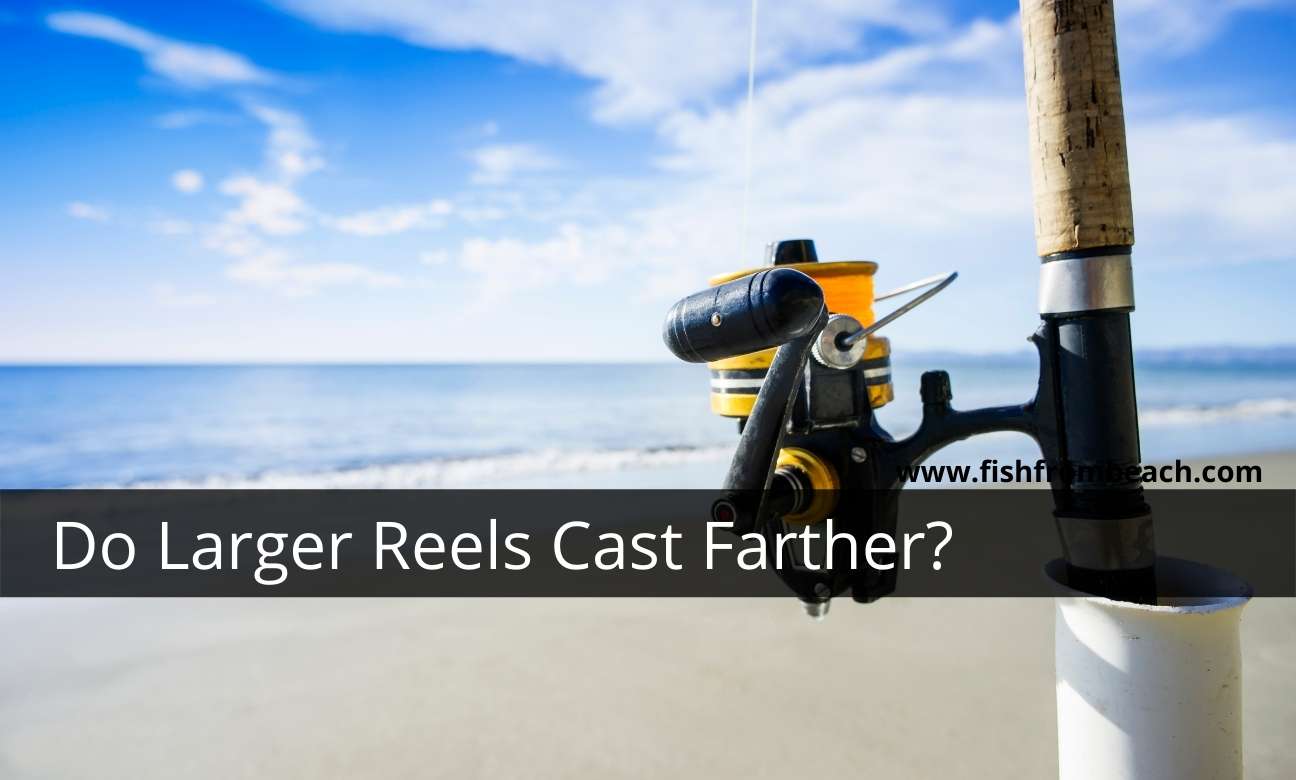
No matter what type of fishing you do, being able to perform decent casts is always a big advantage.
I mean, a good casting distance doesn’t systematically mean more catches, but the ability to cast farther when the nearby zones bring poor results provides anglers with more options and hence better chances of landing something.
Now, in order to improve their castability, fishermen generally choose to use longer rods, lighter lines, or heavier, more aerodynamic sinkers and lures.
These are the most proven ways to gain a few yards in the casting range. However, some anglers and fishing experts believe that the size of the reel also affects casting distance and claim that larger reels help cast farther.
So is this correct? Does reel size really affect casting distance? And can you improve your casting reach just by upsizing your reel?
Yes. The reel size affects the casting distance because the larger the reel, the longer the coils it releases during the cast, which results in more line coming out of the spool in the same amount of time. However, note that a large reel should always be paired with large rod guides in order to reduce the amount of friction the coils receive as they exit the rod.
There are more details worth discussing in this topic, so bring a cup of coffee and read on.
How does reel size affect casting distance?
There are three ways the size of your reel dictates how far you can cast.
The first and most obvious is that a large spool allows more line to be inserted into the spool.
In a real fishing world, you will probably never experience the difference. But a reel filled with 60 yards of line will always outcast a reel filled with only 40 yards.
This brings us to the second way, which is that a large reel offers more options in terms of the line’s pound test and diameter.
With small reels, you usually have to stay light and use thin diameters in order to fit enough line into the spool.
So unless you are using a braid, you cannot match a strong, thick line with a small spool. This will require you to keep your casts short out of fear of losing the entire spool if something big takes the bait.
With a larger reel, however, you have more room to insert a thicker, stronger line and therefore you can try farther casts with less risk of losing the entire line.
The third way your reel size affects your casting distance is that the larger the spool, the longer the coils that come off the reel during the cast.
This results in more line leaving the reel during the same amount of time, and as a result, more distance traveled above the water body.
How to use your reel to cast farther?
Producing wider coils doesn’t systematically lead to longer casts.
Remember that once your line leaves the reel it needs to pass through the rod guides which creates a bit of friction that steals energy from your casts.
The trick here is that the longer the coils produced by your reel, the greater the amount of friction you receive and, therefore, the more your casts diminish.
So using a big reel to gain distance can easily turn into shooting your own feet.
The solution? Well the first thing to do is make sure your rod guides are big enough to accommodate large coils of line without creating so much friction. Otherwise, you can easily buy bigger ones and change the ones you have.
A large reel should never be combined with small rod guides.
Second, if you are using monofilament, consider emptying your entire spool and filling it with brand new line every 3-4 months. The point here is that mono has excellent memory and your coils are likely to get bigger after every fishing trip.
Braid doesn’t pose the same problem because it has less memory.
Third, always exploit your maximum reel capacity.
The thing with large reels is that it’s much easier to keep a portion of the spool without line. This is another way you could compromise the casting distance as the line will hit the reel wallings more often and hence lose its energy.
You want to keep the spool completely full so that when the line comes off the surface it goes straight through the air.
And of course, never overlook the maintenance of your reels, especially after satlwater fishing.
You want to keep the reel and its inner parts clean and rust free all the time. Corrosion should also stay away from your rod guides.
Some recommended surf fishing reels(*)
Note (*): If you make a purchase through links from this website, we may get a small share of the sale from Amazon or other similar affiliate programs.
Surf Fishing Survey
Help us provide you with better content by answering simple questions about your surf fishing experience and knowledge.
We will put the collected responses together and turn them into valuable information that will help you catch more fish from shore 😉
Note: No personal information will be collected with your answer.

